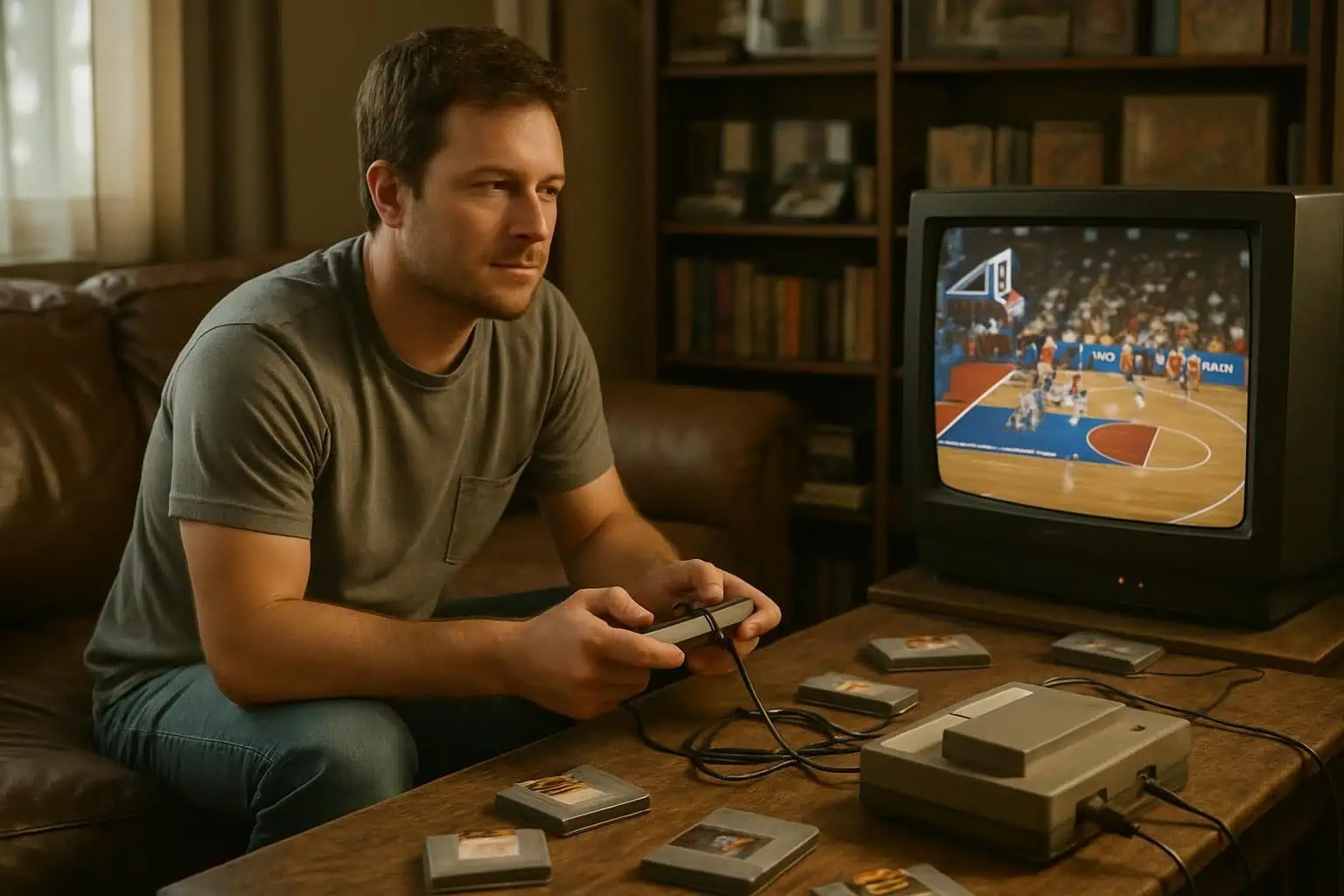Tired of today’s NBA games feeling too complicated or realistic to fully enjoy? In fact, nba video game history began way back in 1973 with the simple game “Basketball!”. This quick tour through 8 major milestones will help you see how these sports games evolved into today’s exciting titles like NBA Jam and NBA 2K.
Read on to relive your favorite gaming memories.
Key Takeaways
NBA video games kicked off in 1973 with “Basketball!” on the Magnavox Odyssey—a basic game without passing or dribbling.
In 1993, NBA Jam shook things up, featuring fiery basketballs and famous phrases like “Boomshakalaka!”—earning a billion dollars in arcade profits.
NBA 2K11, released in 2010, featured the “Jordan Challenge“, putting Michael Jordan back into gaming. It sold over 5.5 million copies globally.
Spike Lee directed a unique story mode in NBA 2K16 (2015). The game set records, moving 4 million copies in a single week and hitting 8 million total sales.
Today’s NBA games rely on motion capture and smart AI to show realistic player moves—copying Kareem Abdul-Jabbar’s classic sky hook or Steph Curry’s signature jump shot.
Table of Contents
The Origins of NBA Video Games
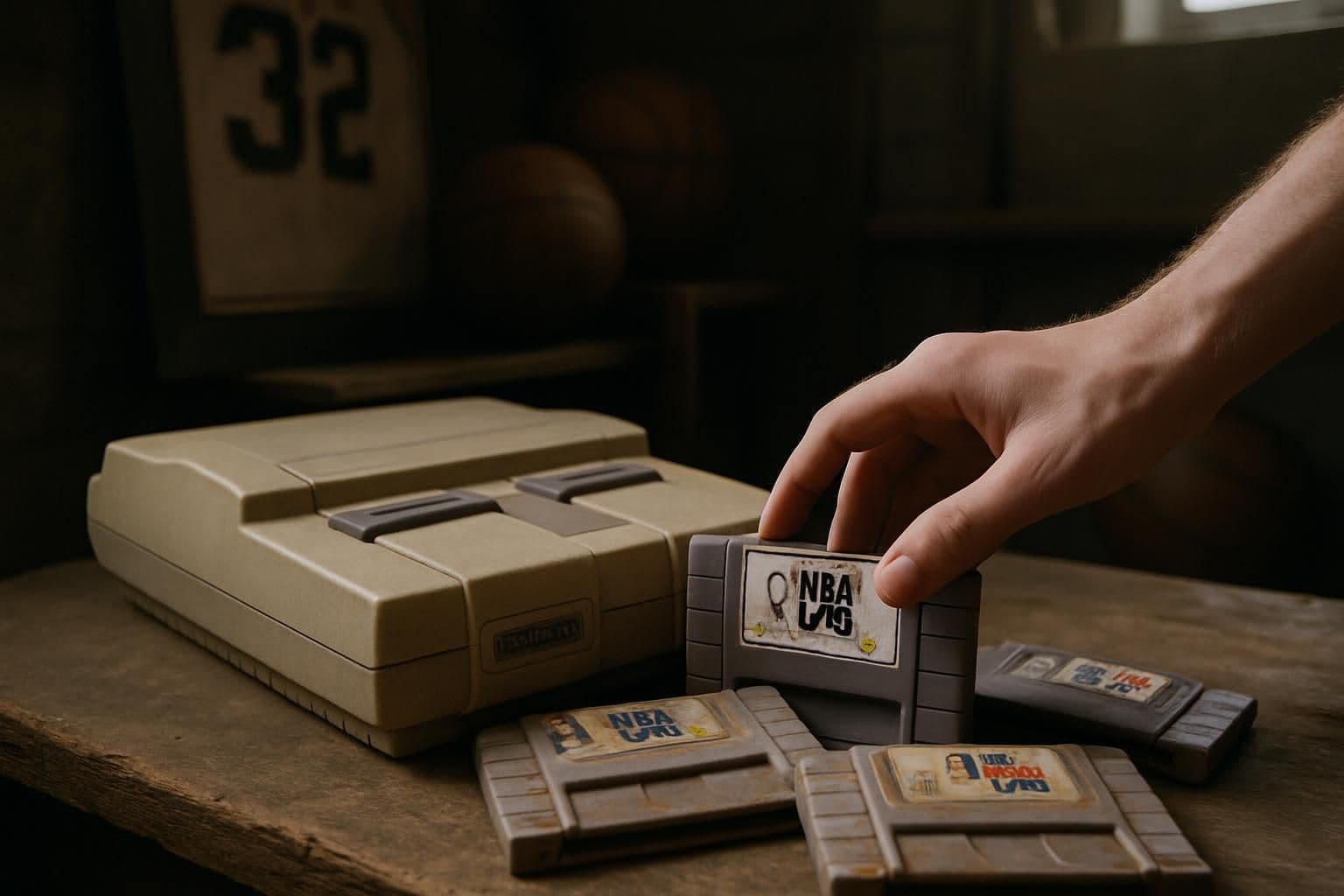
NBA video games started with simple pixels and basic gameplay in the 1970s. These early games laid the foundation for what would become a massive gaming genre that spans decades.
Basketball! (1973)
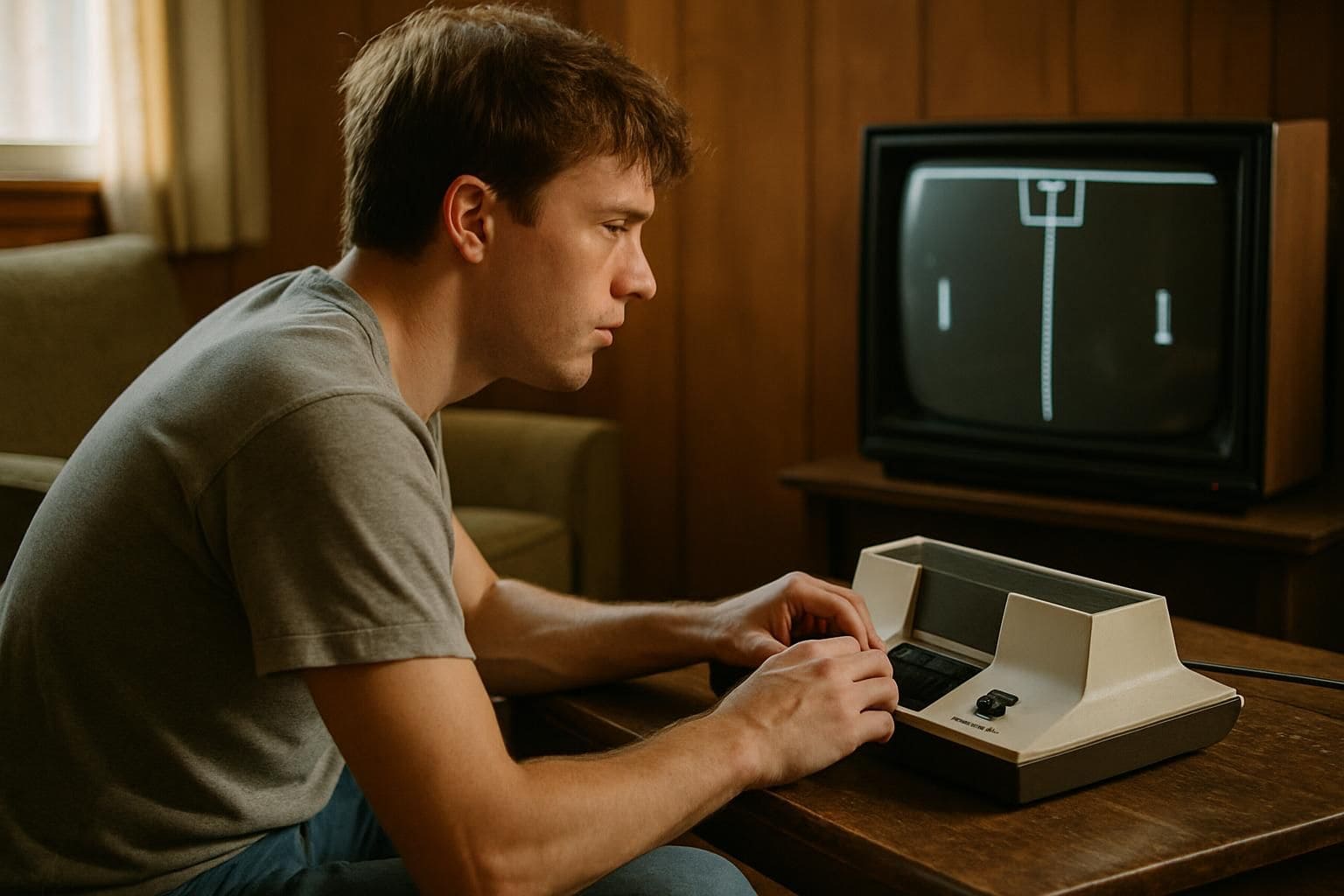
Basketball! became the first-ever basketball video game in 1973. Magnavox made this simple, yet fun title for their Odyssey console. It let players shoot and move around—but no passing or dribbling.
One funny twist: missed shots could bounce back into your own net! Odd feature for sure, but it gave the gameplay extra charm that today’s basketball games don’t have.
Basketball! wasn’t just a game, it was the starting whistle for what would become a billion-dollar sports gaming industry.
NBA Basketball (1980)
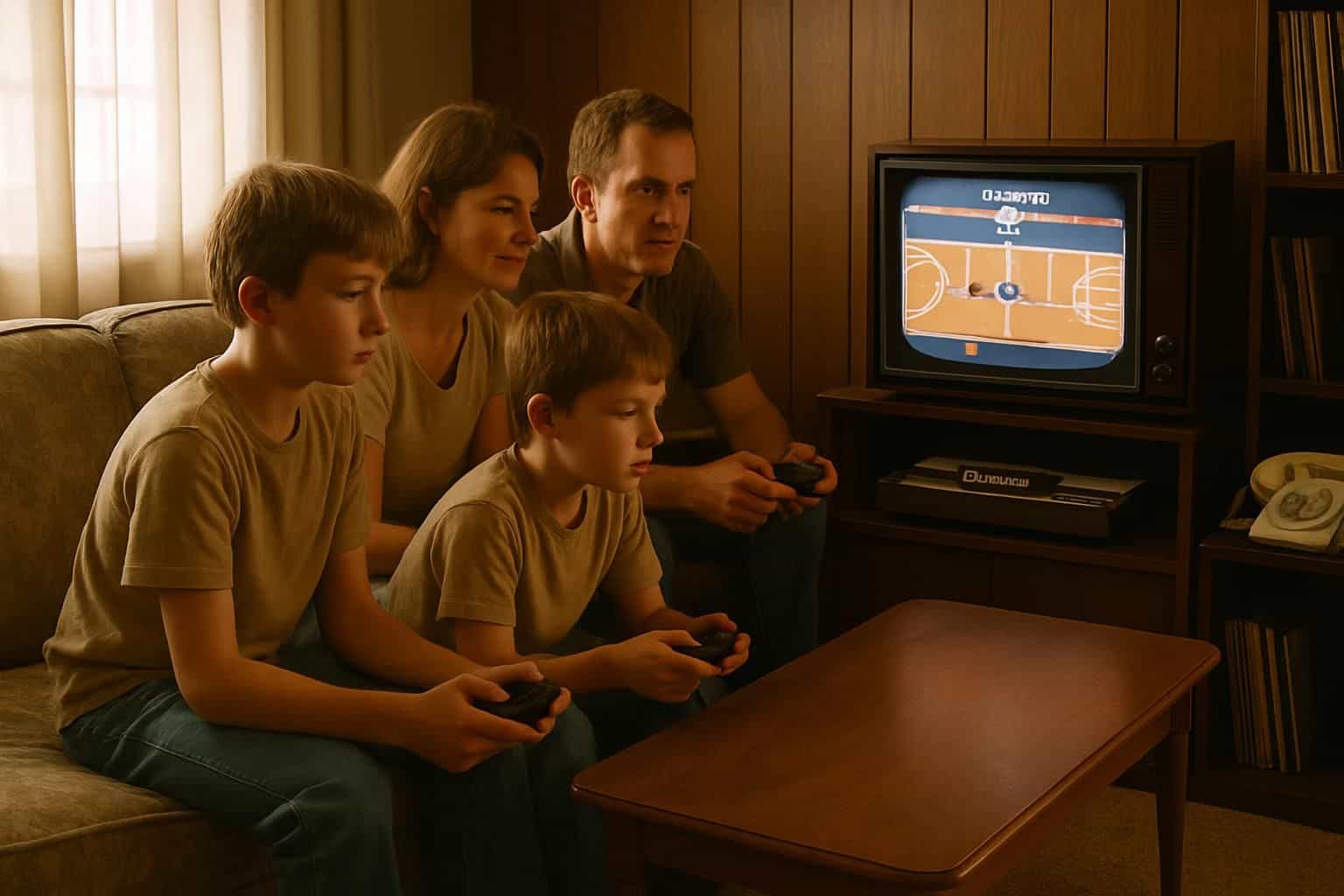 NBA Basketball arrived on the scene in 1980, just seven years after Basketball! had set the stage in 1973. As Intellivision’s first official NBA-licensed game, it signaled a big step forward for sports gaming.
NBA Basketball arrived on the scene in 1980, just seven years after Basketball! had set the stage in 1973. As Intellivision’s first official NBA-licensed game, it signaled a big step forward for sports gaming.
Controls became smoother, gameplay more realistic, and court action felt closer to the actual sport than ever before.
Fans finally got to experience video games based on real NBA teams—the graphics may seem basic today, but back then they stunned players. NBA Basketball delivered authentic team experiences and drew in sports fans, including those into NBA picks and parlays.
It also opened doors for future classics like NBA Jam and NBA 2K, games that brought the pace and thrill of professional basketball to life.
One-on-One: Dr. J vs. Larry Bird (1983)
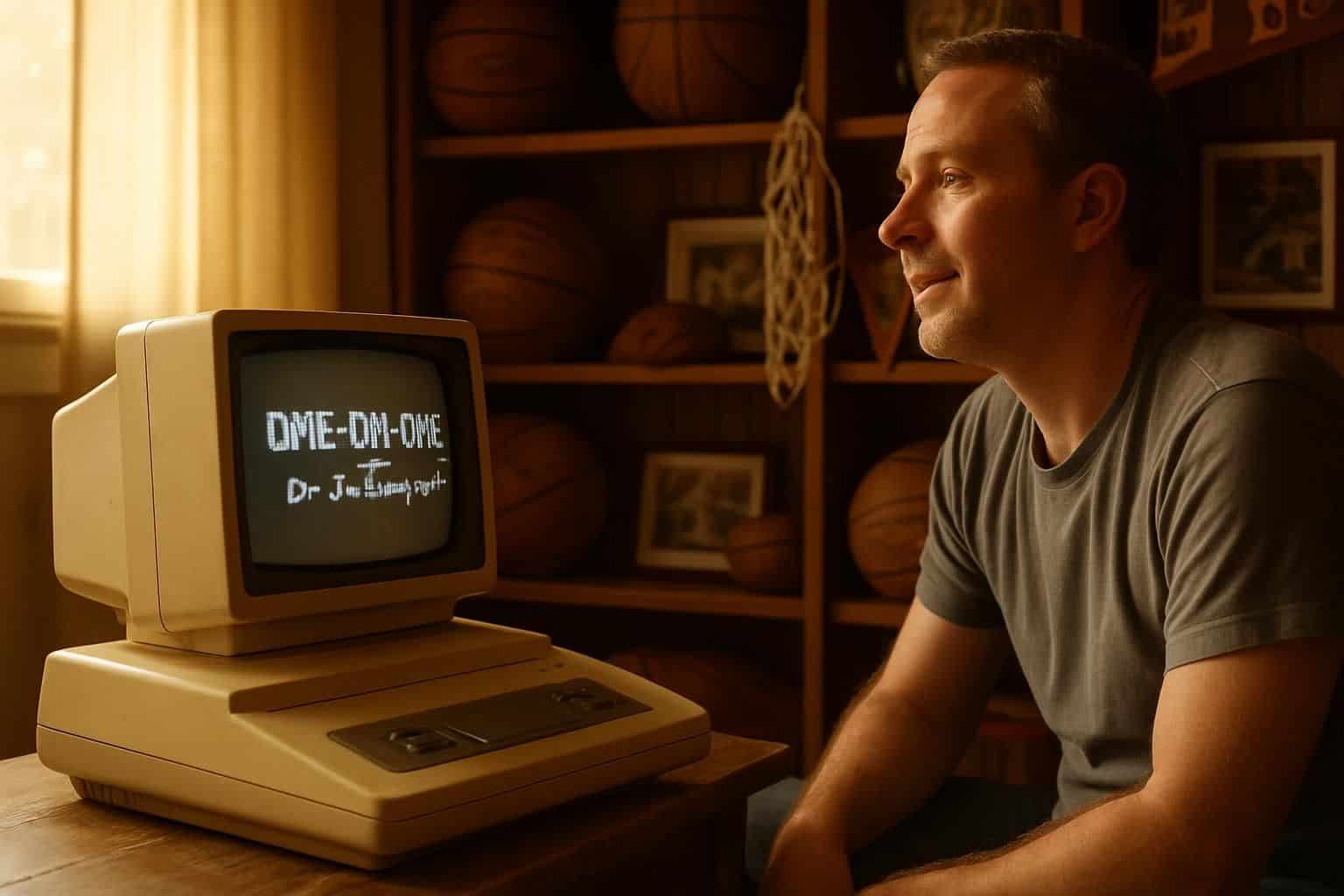
Basketball video games took a big jump forward thanks to NBA Basketball—and Electronic Arts noticed. In 1983, EA released “One-on-One: Dr. J vs. Larry Bird” on the Apple II, soon bringing it to platforms like Atari and Commodore 64.
Players took control of legends Julius Erving and Larry Bird, going head-to-head in exciting matchups. Fans especially enjoyed fresh features like the shot clock and instant replay.
This release marked a major turning point for basketball video games. You could dunk like Dr. J or try a deep jumper with Bird from far outside—realistic details players hadn’t seen before.
Its popularity helped EA become a leader in sports gaming, long before NBA Live came along. Even today, basketball fans often call it the first real one-on-one basketball game.
The Rise of 8-bit and 16-bit Basketball Games
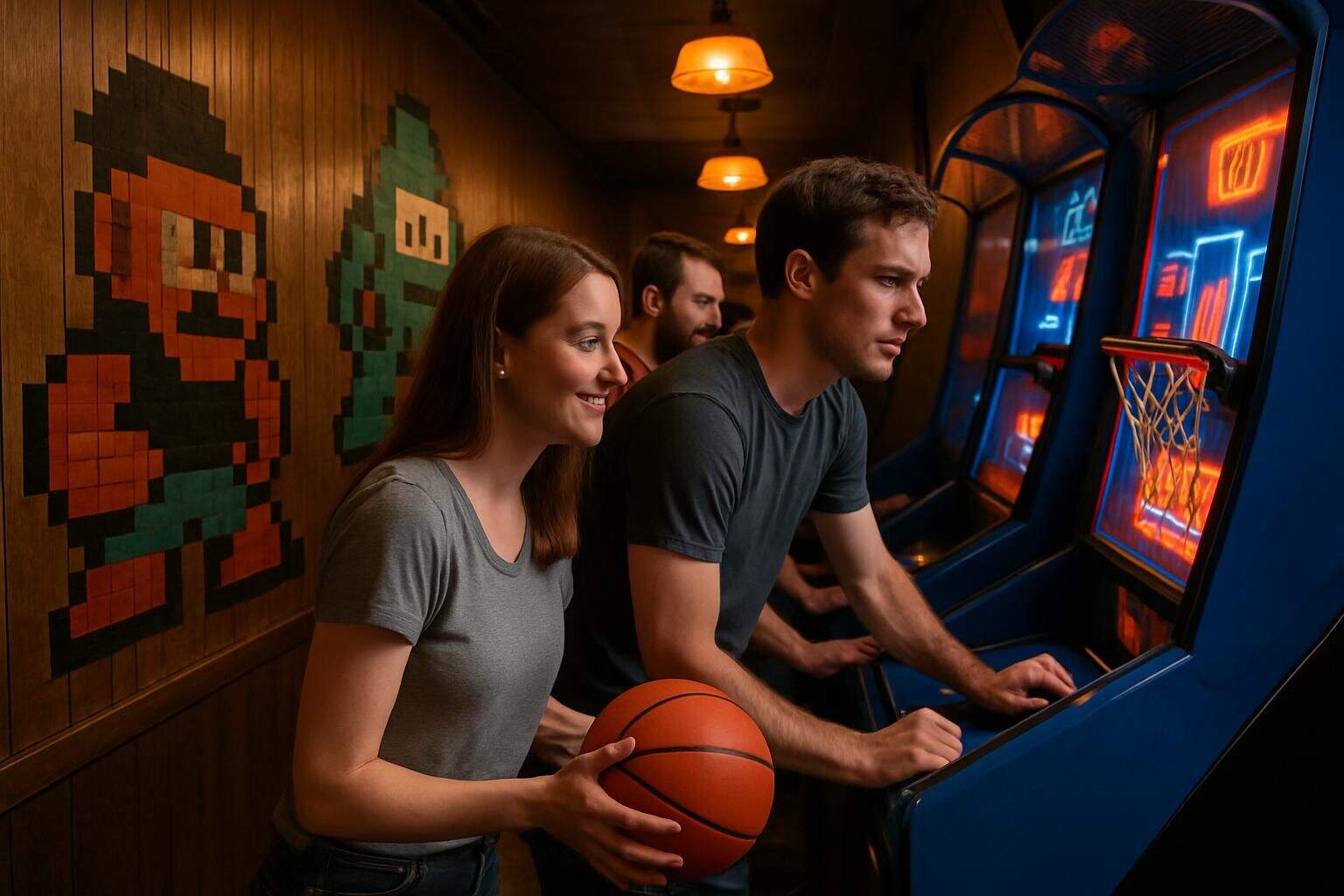
The 8-bit and 16-bit era brought NBA games to life with bright colors and simple controls. Games like Double Dribble and NBA Jam changed how fans played digital basketball with their arcade style and fun features.
Double Dribble (1987)
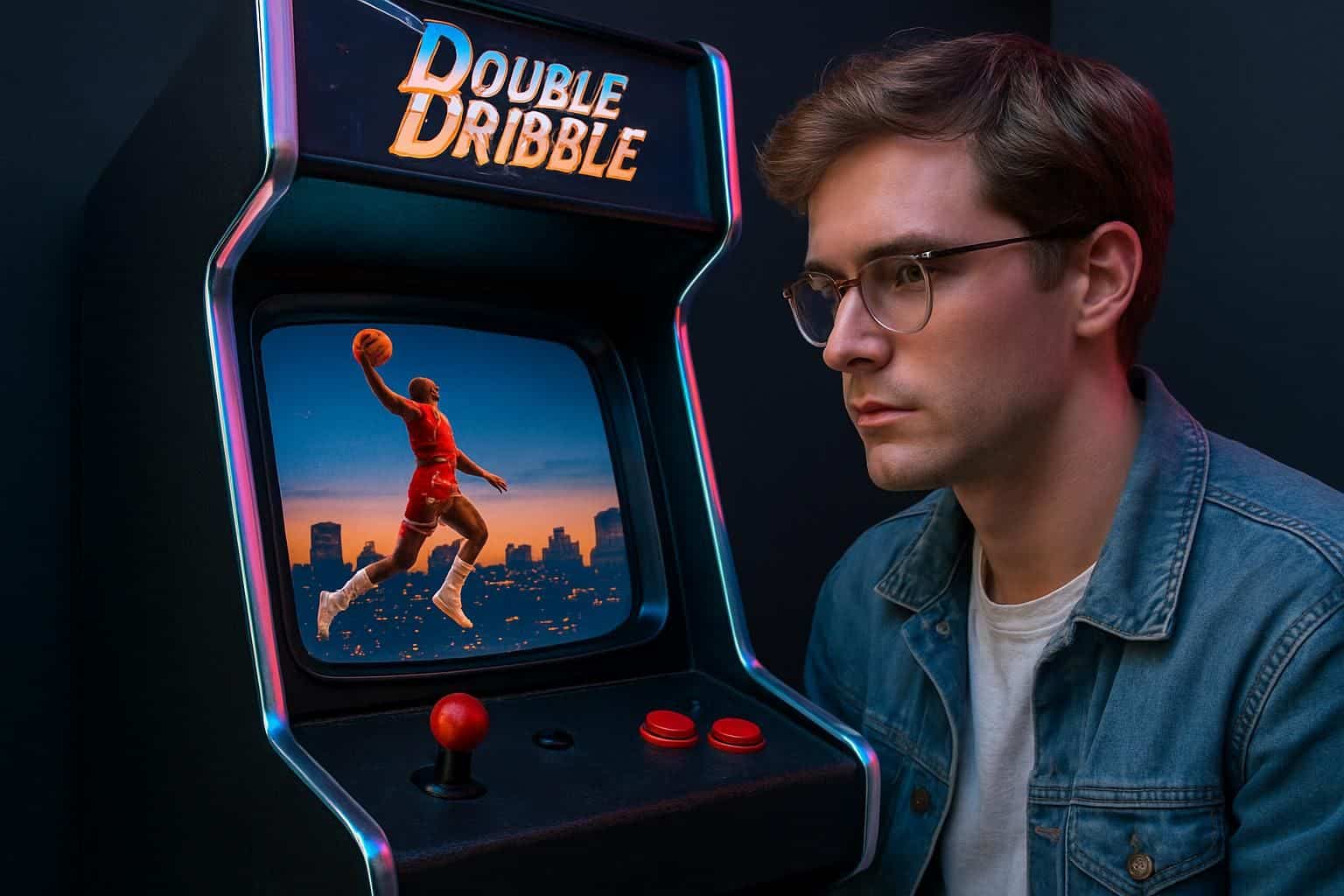
Konami scored big in 1987 with Double Dribble, making the most lifelike basketball game around. Fans went crazy for those close-up dunk shots—players flying high, dunking hard, all in cinematic style.
Those exciting animations kept arcade players hooked, dropping quarter after quarter. Soon after, Double Dribble brought NBA thrills right into living rooms on the NES console.
Double Dribble changed everything with those dunk cutscenes – it was the first time a basketball game felt like watching a real game on TV.
Lakers vs. Celtics and the NBA Playoffs (1989)
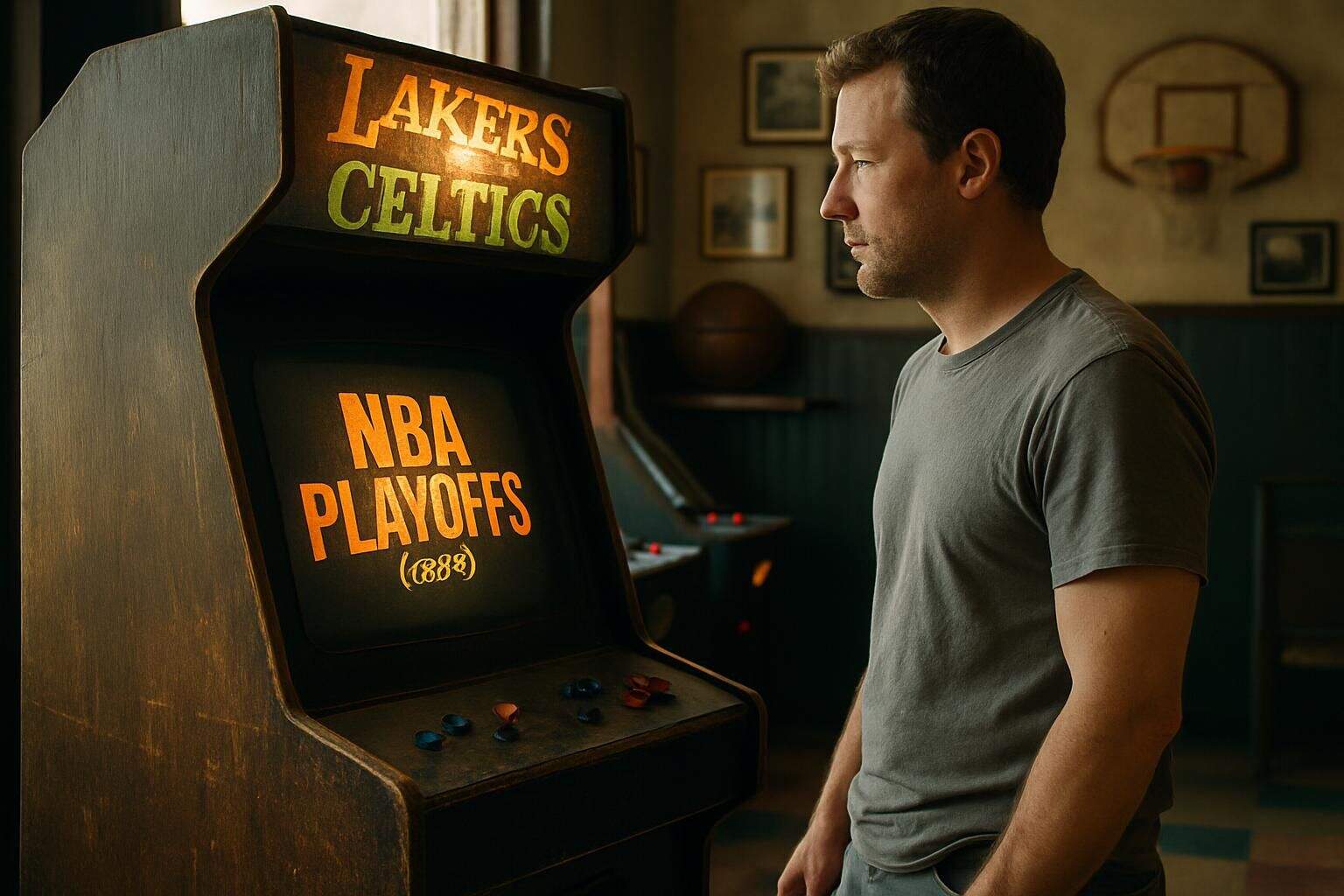
After Double Dribble shook up arcade basketball, Lakers vs. Celtics and the NBA Playoffs pushed things even further in 1989. This DOS game featured ten authentic NBA teams from the 1988-89 season—and players finally got to control stars like Kareem Abdul-Jabbar and Larry Bird.
Favorite teams included the Boston Celtics, Los Angeles Lakers, and Chicago Bulls.
Fans loved the colorful EGA graphics, which made players look similar to the real athletes. Lively sound effects added energy to each dunk, dribble, and free throw. EA Sports made a game that let basketball fans choose teams like the Detroit Pistons and Philadelphia 76ers and experience authentic matchups.
It became a huge success—by featuring real NBA teams and players instead of made-up characters, Lakers vs. Celtics paved the way for basketball video games that followed.
NBA Jam (1993)
NBA Jam landed in arcades in 1993—and totally changed sports gaming. Midway’s basketball title let you pull off insane dunks and shoot flaming basketballs. Players went crazy for catchphrases like “Boomshakalaka!” and “He’s on fire!” shouted during matches.
Iconic NBA stars—Scottie Pippen, Shaquille O’Neal, and more—made it feel real yet wildly fun.
The game earned a massive $1 billion in arcade revenue, proving its huge popularity. NBA Jam introduced an easy-going, action-packed style of sports gaming without strict rules. You and a friend could pick teams like the Chicago Bulls or New York Knicks for quick and intense two-on-two matchups.
Even today, many fans rank NBA Jam as the greatest arcade sports game ever.
The Evolution of NBA Simulation Games
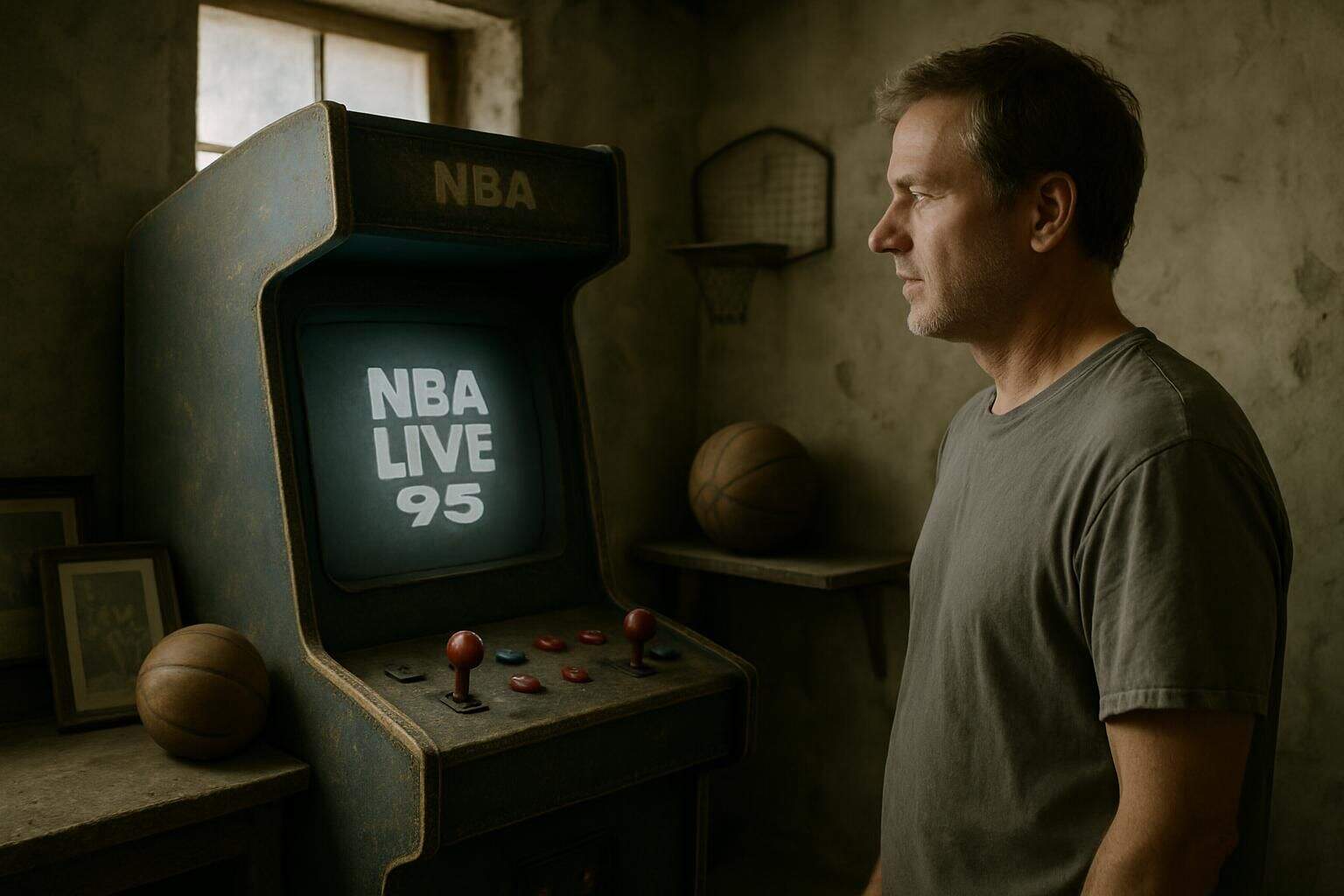
NBA simulation games changed how fans play virtual basketball with titles like NBA Live 95 and NBA 2K setting new standards for graphics and gameplay – stay tuned to see how these games made the jump from simple arcade fun to sports sims that capture every detail of the real NBA action.
NBA Live 95 (1994)
EA Sports released NBA Live 95 in October 1994—and it totally changed basketball gaming. This was the title that brought cool new isometric views, letting gamers actually see more of each play.
Fans especially liked the accurate rosters, matching real NBA teams at the time. You could control superstars like Michael Jordan, Shaquille O’Neal, and many well-known players from teams like the Chicago Bulls and Orlando Magic.
This first entry in EA’s soon-to-be-famous NBA Live series originally came out for Sega Genesis and other popular consoles of the mid-90s. The game balanced arcade-style fun and realistic basketball action, making it popular with both casual players and dedicated basketball fans.
It had exciting free throws and slam dunks that added extra thrills. Many of the biggest game companies tried to match NBA Live 95’s success, but EA Sports set the bar high—that’s how big the game’s impact was.
NBA 2K (1999)
NBA Live 95 brought basketball games closer to real life—but NBA 2K raised the bar completely. Sega Dreamcast players first enjoyed NBA 2K on November 10, 1999… forever changing virtual basketball.
Unlike earlier arcade-type games, NBA 2K closely followed actual NBA rules. Plus, putting Philadelphia 76ers star Allen Iverson on the cover turned heads from day one.
Right from the start, NBA 2K set a solid foundation for future basketball gaming dominance. Early game features later evolved into fan-favorites like MyPlayer mode and GM options. Fans quickly moved over from NBA Live, drawn by NBA 2K’s smoother gameplay and realistic feel.
Its popularity on Sega Dreamcast showed everyone sports could blend real action and fun. NBA 2K paved the way for sports gaming’s future successes.
ESPN NBA Basketball (2003)
NBA 2K raised expectations for basketball games—but ESPN NBA Basketball changed things again in 2003. Sega and Visual Concepts released the fifth game in their NBA 2K series, this time styled like an ESPN broadcast.
They added a new feature called 24/7 Mode, letting gamers build their own player and boost skills through street-style matches. This creative mode became the base for later favorites like MyPlayer and MyCareer.
Fans had fun playing big-name stars, such as Gary Payton, and rising teams like the Phoenix Suns. ESPN NBA Basketball blended arcade excitement with realistic gameplay basketball fans enjoyed.
Detailed player designs and smooth animations showed off the power of PlayStation 2 and Xbox consoles. The game’s emphasis on player growth and streetball flavor made it different from NBA Live and other sports games at that time.
Iconic Titles in NBA Video Game History
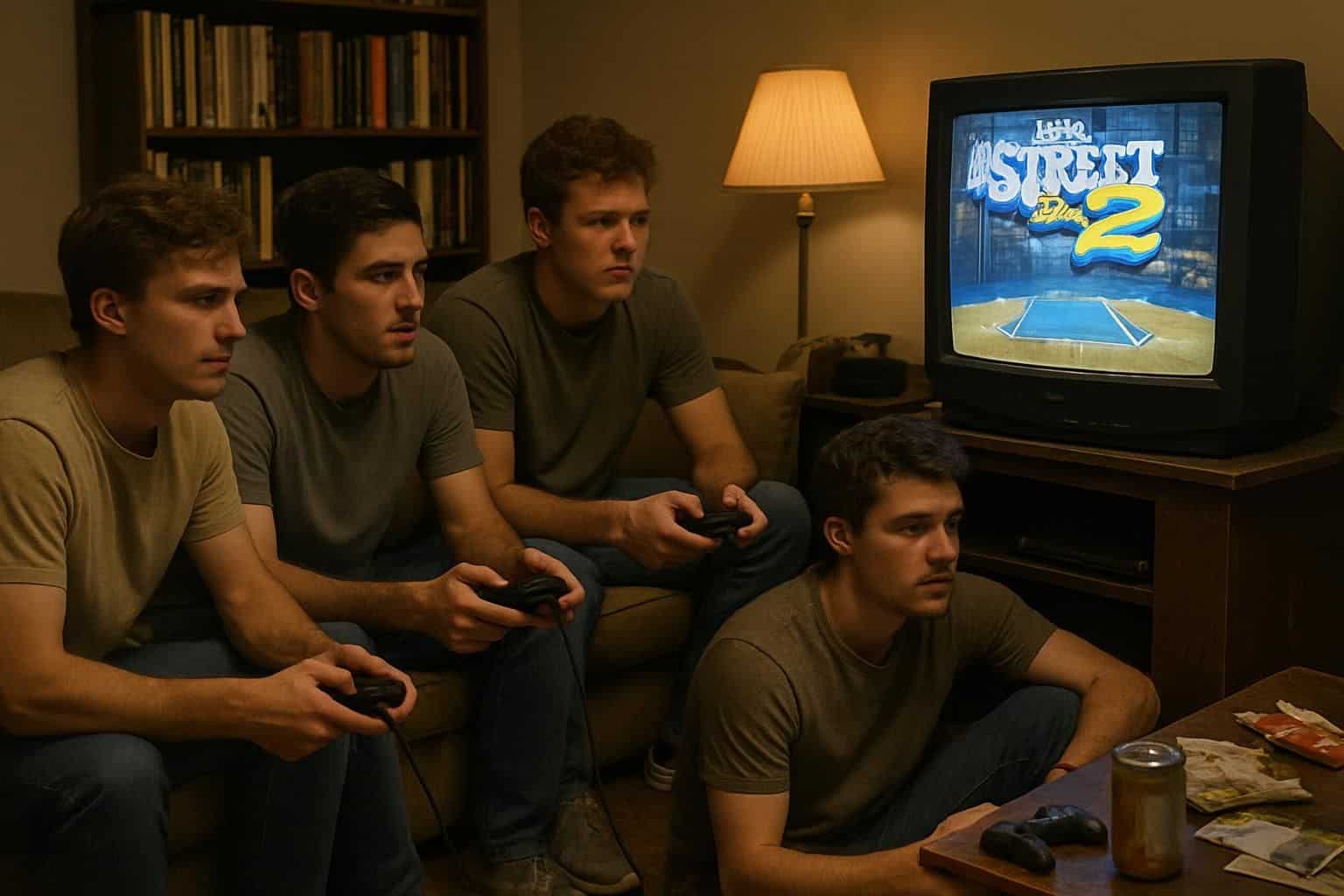
Some NBA games changed how fans played at home. NBA Street Vol. 2, NBA 2K11, and NBA 2K16 each marked a turning point in gaming history.
NBA Street Vol. 2 (2003)
NBA Street Vol. 2 arrived in 2003 from EA Sports BIG—and quickly grabbed attention. It brought street basketball culture and arcade-style gaming together perfectly. Gamers could perform over-the-top dunks and tricks using legends like Michael Jordan or could build their own players to rule the courts.
Instead of strict basketball rules, NBA Street Vol. 2 emphasized pure fun. The soundtrack featured funky beats from P-Funk All Stars, matching the fast-paced gameplay. Fans often call it the greatest street basketball game ever—thanks to exciting three-on-three action set on well-known urban courts.
The game connected NBA stars to street hoops, appealing equally to casual gamers and sports compared to esports enthusiasts through easy yet rewarding play.
NBA 2K11 (2010)
NBA 2K11 launched on October 5, 2010—and basketball video games haven’t been the same since. After years away, Michael Jordan finally returned, giving fans the chance to step into his shoes.
The game featured the “Jordan Challenge“, letting players experience 10 iconic MJ career moments firsthand. Fans loved it—the game sold a huge 5.5 million copies globally and earned an impressive 8.0 rating from IGN.
This edition also leveled up the career experience. The My Player mode went beyond the court, allowing players to score endorsement deals with major brands. Chicago Bulls and Miami Heat fans especially enjoyed watching their favorite stars perform moves that looked super real.
Later, NBA 2K16 would expand on these ideas, adding new options for dedicated basketball gamers.
NBA 2K16 (2015)
NBA 2K16 landed in stores on September 29, 2015—and it truly changed basketball gaming. Directed by legendary filmmaker Spike Lee, the new MyCareer story mode brought the experience closer to a real narrative, and fans loved it.
It quickly broke records, selling 4 million copies in its first week alone, with lifetime sales reaching an impressive 8 million copies.
Golden State Warriors supporters got the thrill of playing as their recent championship team. And Sacramento Kings fans? They appreciated the smoother, more lifelike player movements and animations.
Franchise mode went deeper too, giving gamers new ways to shape and manage their teams.
Players built dream line-ups featuring stars like Kenny Anderson or Nick Van Exel or dominated the game with current NBA stars. Advanced AI made opponents move, react, and strategize like actual athletes on a real basketball court.
These game upgrades raised expectations for how future NBA titles would look and perform.
Technological Advancements in NBA Video Games
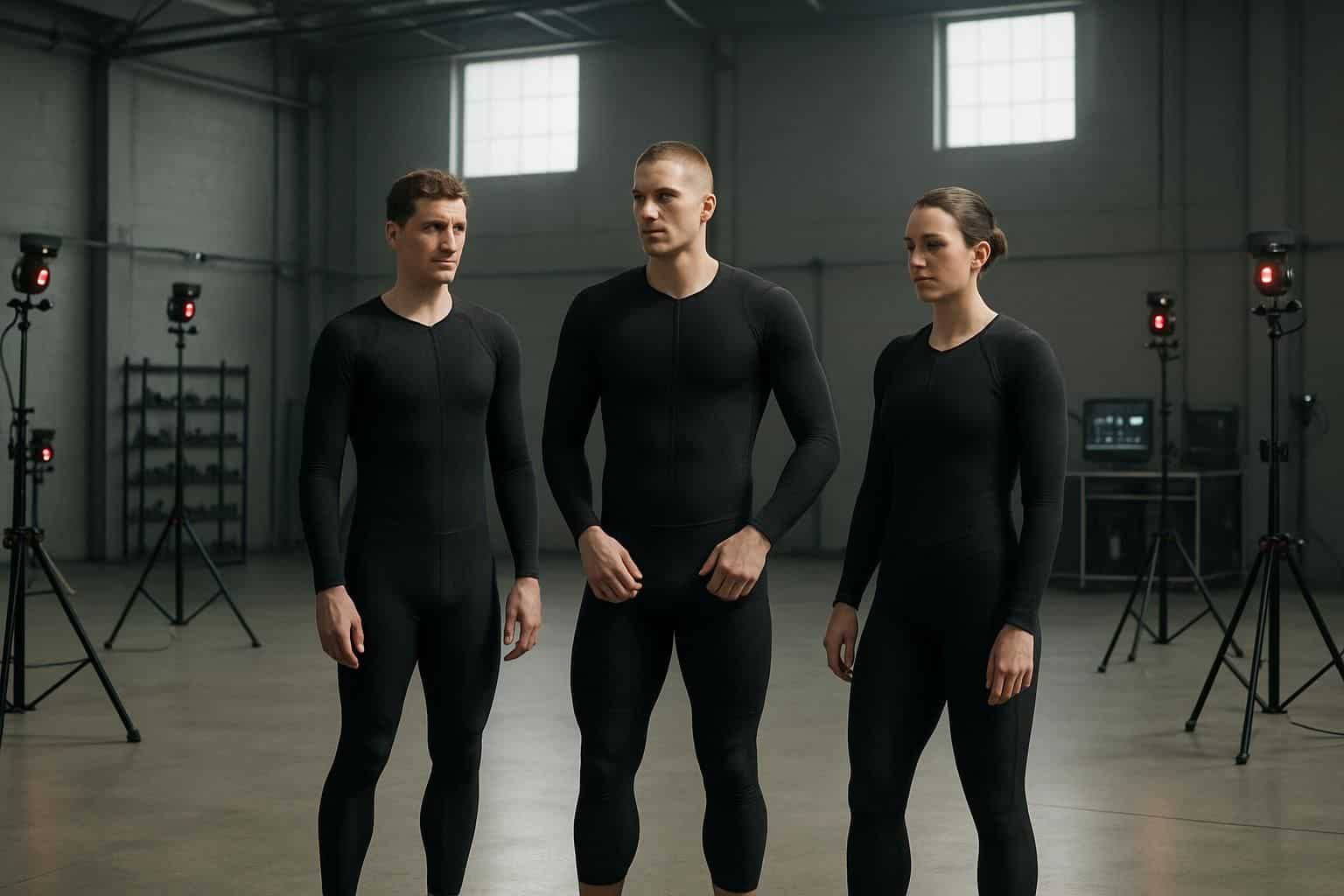
NBA games have changed more than just graphics since the 1970s. Motion capture tech now tracks real player moves while AI makes computer teams act like their real-life counterparts.
Realistic player animations
Player animations in NBA video games jumped forward with the NBA 2K series—players now mirror real-life moves closely. James Worthy’s famous spin and Kareem Abdul-Jabbar’s sky hook appear spot-on.
Motion capture technology uses NBA stars in special suits covered with tracking dots, recording each exact move. The tech picks up every tiny detail, like Horace Grant’s slight knee bend before shooting or the unique dribble of Denver Nuggets players.
Forget those stiff, robotic players from early NBA video games. Modern versions now capture muscles flexing, jerseys shifting naturally, and realistic facial expressions. In NBA 2K14, Utah Jazz players respond naturally after bumping into rivals.
Even Charlotte Hornets bench players react authentically after their team scores—clapping, cheering, and moving around. Small touches like these create a feeling similar to watching live NBA action on TV.
Advanced AI systems
AI systems in NBA games have improved a lot since the early years. Today, NBA 2K games use smart tech that adapts to your play style. The AI notices your moves, then adjusts defenses to shut down your best tricks.
Even real NBA teams, like the Golden State Warriors, rely on similar tech to study gameplay.
NBA 2K16 marked a big leap forward for AI. Now, computer players set screens, choose plays, and react fast—just like actual NBA pros. Teams such as the Los Angeles Lakers use AI to spot which players might risk injuries.
And game developers put the same tech into NBA 2K titles.
In these games, AI tracks player fatigue closely, causing tired players to slow down or miss shots. Each star’s special play style gets copied exactly—Kareem Abdul-Jabbar’s classic sky hook shot or Steph Curry’s rapid-fire jumper looks real.
This level of detail makes the gaming experience feel closer to a TV broadcast—something fans really enjoy.
Online multiplayer modes
AI gives us smart computer players, but online modes connect us with real people. Xbox Live kicked off this shift back in the early 2000s, changing how gamers interact. By 2022, over 1 billion gamers played online—that’s huge! NBA games jumped into this early, too.
NBA 2K lets you join virtual leagues with friends or even strangers worldwide. You build your dream team, mixing legends like Kareem Abdul-Jabbar with current stars from teams like the Milwaukee Bucks or Houston Rockets.
And the best part is… you don’t even need to be in the same room to trash talk during close playoff games or slam dunk contests.
Even arcade classics like NBA Jam and NBA Hangtime got into online play. Gamers love testing themselves against others instead of just computers. Now, massive online tournaments draw big crowds—Portland Trail Blazers fans square off against Indiana Pacers loyalists.
Mobile games also let people enjoy quick basketball matches during lunch breaks. Looking ahead, we’ll see more connected games where you can play hoops anytime—with anybody, from any place.
Cultural Impact of NBA Video Games
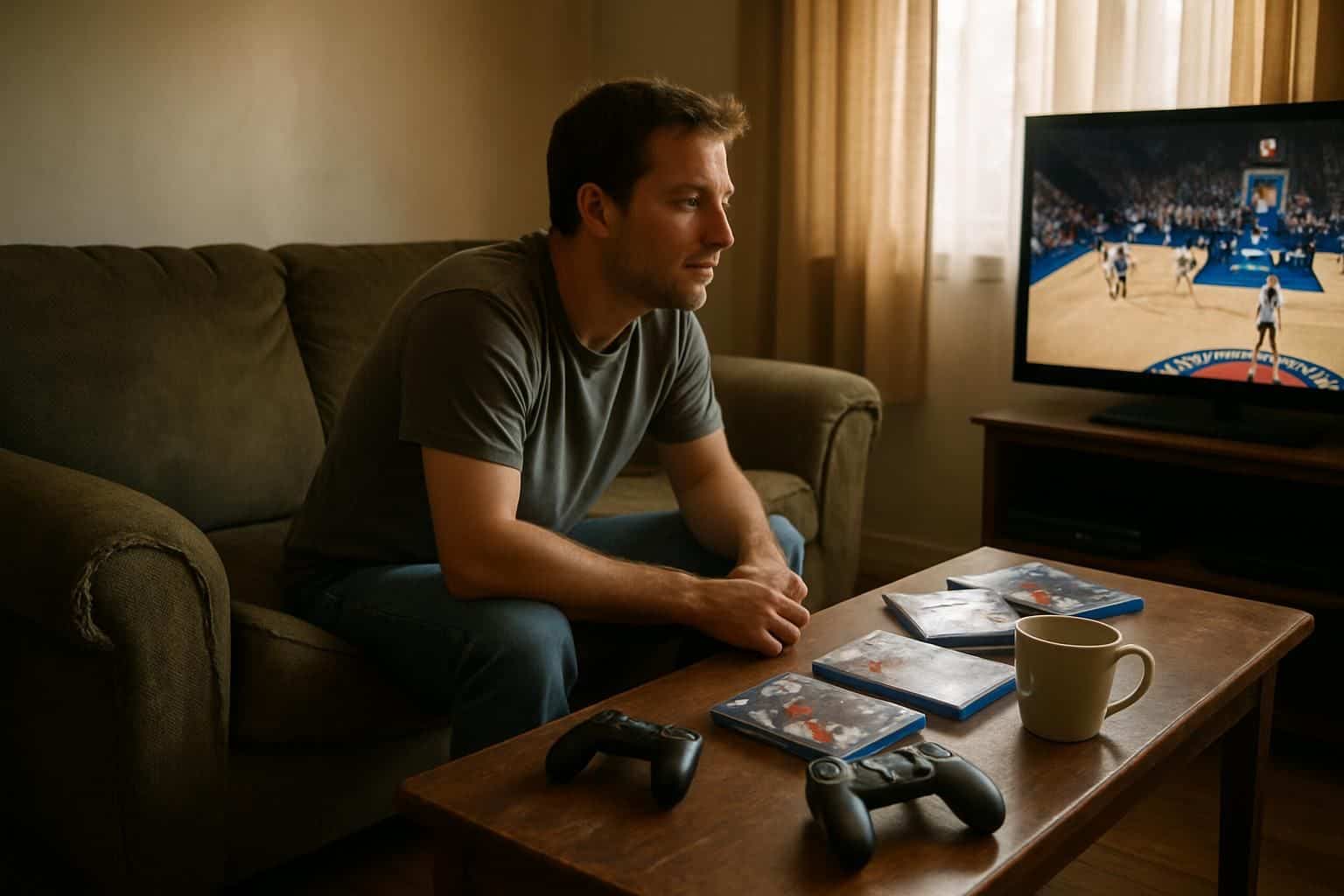
NBA video games have shaped how fans watch real games, talk trash with friends, and learn player stats — click to see how these digital courts changed basketball culture forever.
Influence on basketball fandom
NBA video games have reshaped basketball fandom since the 1990s. Titles like NBA Jam and NBA 2K allowed players to become their favorite stars—lifting individual athletes above traditional team rivalries.
This digital trend reflects real-life patterns: legends such as Kareem Abdul-Jabbar gain popularity beyond hometown loyalty. Through fantasy modes built into these games, fans start learning about athletes from across the league, instead of sticking to local players.
Modern features like social media sharing also help fans connect. Players post highlights of their virtual NBA plays online—and conversations start, mixing together real-life and game experiences.
As these talks spread, NBA fandom widens from local communities to global followers. Teams like the Washington Bullets, San Antonio Spurs, and Cleveland Cavaliers become familiar to gamers worldwide, including those who’ve never attended an NBA game in person.
For many younger fans today, their first exposure to basketball rules, gameplay, and star athletes comes directly from video games—not live TV.
Representation of iconic players
Basketball fans love connecting with their idols through video games—and NBA games do it best. Game creators work hard to copy each player’s moves and style. NBA 2K11 brought back Michael Jordan, letting fans relive big moments—like his iconic “Shot” and the epic flu game.
They nailed every detail, from Jordan’s tongue-out pose to his fadeaway jumper and fierce confidence on the court. More recent NBA 2K versions get even more precise—Steph Curry‘s lightning-fast shot, LeBron’s explosive drives, and Giannis’ tricky euro-step.
The players not only move but react just like they would in real life. This careful approach makes basketball legends—both past and present—feel real and close to fans.
How Will NBA Video Games Evolve in 2025?

NBA video games in 2025 will seriously close the gap between virtual and real-life hoops. Virtual reality tech will let fans experience the game like they’re actually on the court—maybe even stepping into a player’s shoes, like those of Joel Embiid’s injury-prone teammates.
Advanced haptic feedback will make fans feel crowd reactions, court vibrations, and even the bounce of the ball.
Cutting-edge AI based on real NBA data will simulate lifelike player movements. Teams like the Minnesota Timberwolves and Los Angeles Clippers will have virtual players moving exactly like their real-life versions.
Game options won’t stop at simple match-ups. Fans can now fully manage teams through entire careers—making trades, handling salary caps, and planning multiple seasons ahead. Online gaming leagues will also become more global with bigger tournaments, cash prizes, and international player pools.
The next NBA 2K might even use phone cameras to scan your real basketball moves, turning you into a perfect digital version of yourself. These games will entertain casual fans and also help basketball players sharpen their real-world skills.
People Also Ask
What was NBA Jam and why was it so popular?
NBA Jam and its sequel, NBA Jam Tournament Edition, dominated arcades during the early 1990s. Easy-to-learn controls, outrageous dunks, and impossible jumps captured people’s attention. Fast action combined with memorable sayings like “He’s on fire!” made it addictive and hugely popular.
How did NBA 2K change basketball video games?
NBA 2K brought lifelike basketball to the sixth-generation consoles, like PlayStation 2 and Xbox. It focused heavily on accurate player movements, realistic gameplay, and believable strategies. Now considered the go-to basketball game, NBA 2K releases yearly with constant improvements.
What were some early NBA video games on Sega’s systems?
Sega’s Game Gear featured early basketball games like Arch Rivals—a tough, aggressive style of play. Sega also had NBA Showtime: NBA on NBC, showcasing stars such as Kareem Abdul-Jabbar and the Nets’ Derrick Coleman.
Will virtual reality change NBA video games?
Virtual reality (VR) and augmented reality (AR) represent major shifts ahead for NBA gaming. Players will soon experience stepping onto the court, taking shots, and passing the ball in realistic virtual environments. VR and AR promise deeper, more immersive basketball experiences.
How do college basketball games connect to NBA video game history?
College basketball games—like College Hoops—often tested new gameplay ideas before NBA games got them. Younger gamers played college versions first, then naturally transitioned into NBA games as they got older. This created a smooth path from playing college basketball games into NBA titles.
References
https://www.complex.com/pop-culture/a/steve-mcpherson/the-evolution-of-basketball-video-games (2013-06-20)
https://en.wikipedia.org/wiki/Bob_Cousy
https://www.basketballmindsettraining.com/blog/history-of-basketball (2023-12-27)
https://hoopheadspod.com/the-evolution-of-basketball-video-games-and-their-role-in-modern-hoops/
https://en.wikipedia.org/wiki/One_on_One:_Dr._J_vs._Larry_Bird
https://en.wikipedia.org/wiki/Double_Dribble_(video_game)
https://www.mobygames.com/game/614/lakers-versus-celtics-and-the-nba-playoffs/
https://classicreload.com/lakers-vs-celtics-and-the-nba-playoffs.html
https://en.wikipedia.org/wiki/NBA_Jam_(1993_video_game)
https://en.wikipedia.org/wiki/NBA_Live_95
https://vocal.media/gamers/the-history-and-evolution-of-the-nba-2-k-franchise
https://en.wikipedia.org/wiki/ESPN_NBA_Basketball_(video_game)
https://www.ign.com/games/espn-nba-basketball
https://en.wikipedia.org/wiki/NBA_Street_Vol._2
https://rotorob.com/2010/10/15/video-game-review-nba-2k11/ (2010-10-15)
https://en.wikipedia.org/wiki/NBA_2K16
https://www.theringer.com/2023/01/26/video-games/online-multiplayer-gaming-video-game-culture-single-player (2023-01-26)
https://hoopheadspod.com/how-has-basketball-fandom-changed-over-the-years/
https://digital.library.txst.edu/items/36da8caa-2bf6-4740-94af-993fe7066e23
